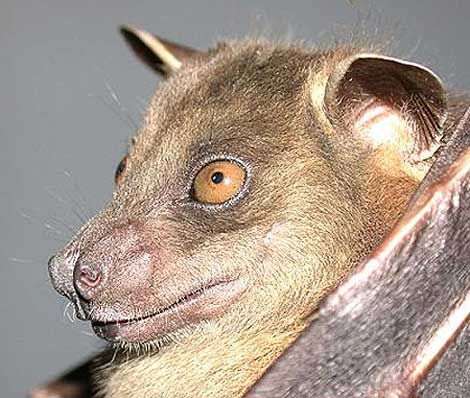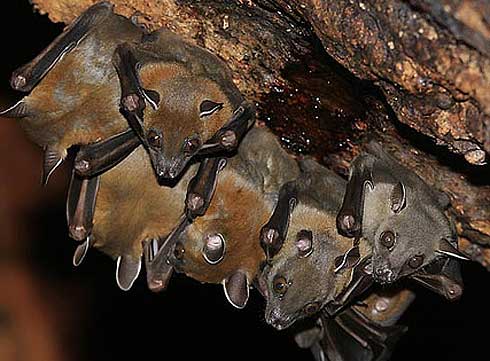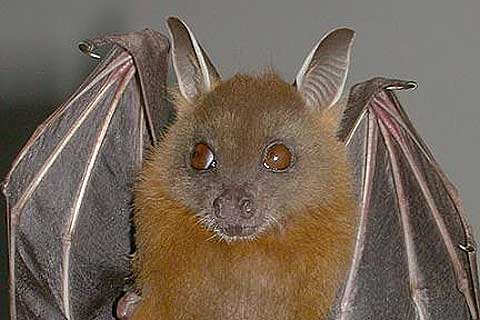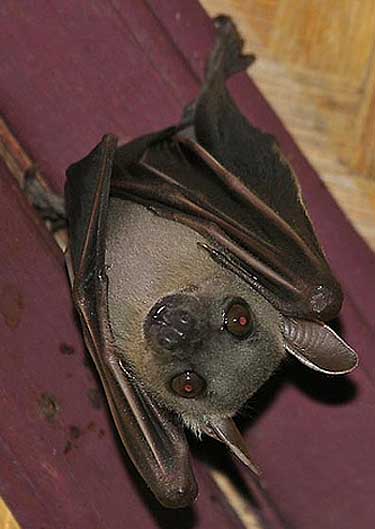Greater Short-Nosed Fruit Bat

With a name that doesn’t go well with its relatively long snout, the Greater Short-Nosed Fruit Bat is a species of Megabat (bats that are common to the old world or eastern hemisphere) that can be found in Pakistan, Bangladesh, Bhutan, Cambodia, China, India, Indonesia, Laos, Malaysia, Myanmar, Philippines, Sri Lanka, Thailand, and Vietnam. In these countries, it prefers to inhabit tropical forests, grasslands, mangrove forests, and any other area where fruit crops are cultivated. It prefers these areas because of its tendency to nest in high palm trees. In the trees, the bats will chew the fronds in order to construct simple tent-like structures. In cases where they can’t find a tree to nest in, they will construct similar tent-like structures by interlacing the leaves and twigs of the creeping vines that sometimes cover buildings.


Greater short-nosed fruit bats typically roost in groups of 8 or 9 individuals of the same sex, only mixing sexes during mating season. The species is frugivorious and they use their not-so-short snouts to locate their food by scent. They primarily eat guava, bananas, chikoo, dates, and lychees; and will commonly eat their entire body weight in one sitting. For this reason some people see them as pests eating up their fruit crops. The bats can also carry diseases that are transmittable to humans.

